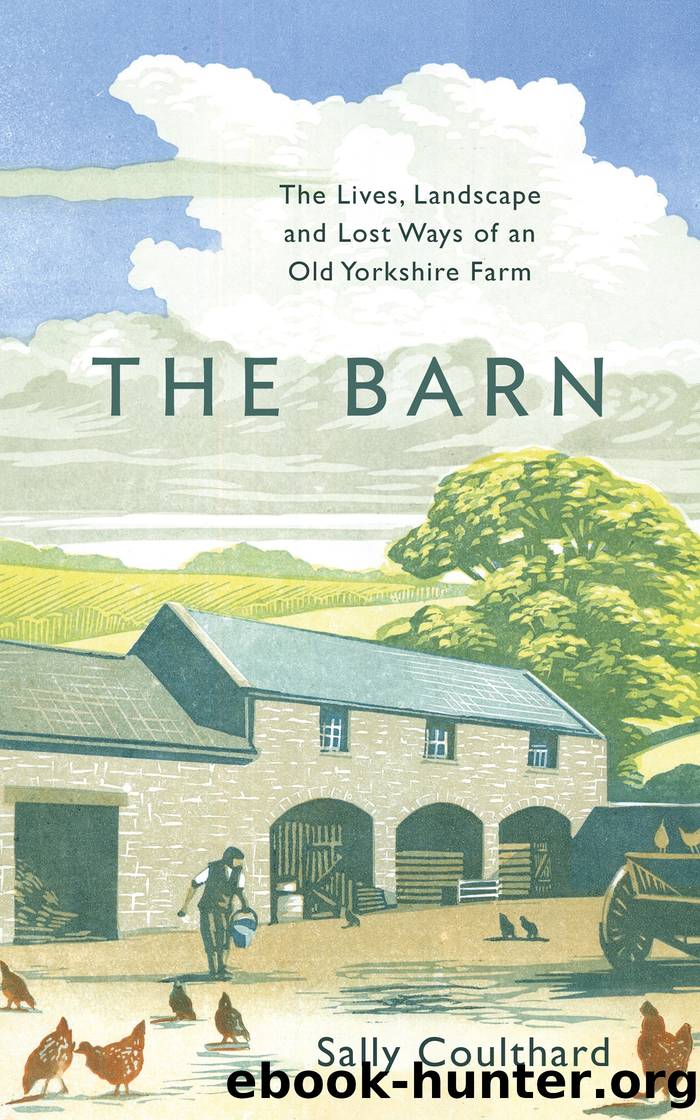The Barn by Sally Coulthard

Author:Sally Coulthard [Coulthard, Sally]
Language: eng
Format: epub
ISBN: 9781800240872
Publisher: Bloomsbury Publishing
On mixed farms, like the Barnâs, keeping dairy cows and pigs went hand in hand. Pigs were found on most farms; with their greedy, unfussy appetites, they were the ideal animal to feed on boiled kitchen scraps, potatoes, spent grains from brewing, and whey, the by-product of butter- and cheese-making.
Throughout medieval times, pigs had been allowed to wander freely. One of the most valuable common rights for villagers was âpannageâ, the right to set pigs free to forage woodland floors, which were a rich source of acorns, beechmast and other fallen nuts. From the time of the Domesday Book, and even earlier, land documents had categorised the size of woodland by how many pigs it could support â entries would read silva ad x porcos, âwood for x swineâ.21 Pannage was a way for everyday folk to fatten up pigs for slaughter for little cost. Even if the lord of the manor demanded payment of rent or, more often, a proportion of the pigs in return for pannage, the practice still brought villagers a decent return.
Enclosure, in the eighteenth century, had turned some of the last of the countryâs woodland over to commercial forestry or agriculture, while the early years of the Industrial Revolution also put huge demands on forests for charcoal production and timber for pit props, transport and building. As fewer people had access to woodland for pannage, farm labourers and other villagers turned to keeping pigs in their own back yards. The lucky ones might own their own pig, while others bought into a share of a communal pig or mortgaged a proportion of the meat in advance to the butcher. Those with even less money to spare might just help feed the pig, with peelings or rotten food, in return for some of the âsmall bitsâ of the animal â its head, bones, feet or ears. Everything was used apart from the squeal.
Pigs were rarely kept for more than a year. They would be bought as piglets and then fattened up for killing just before winter arrived in order to provide a source of meat through the hardest months. Killing the animal in cold weather also meant its meat wouldnât go off as it was left to hang. The late pigâs owners would then swap a ham or other cut for a new piglet, and the process would start all over again. Such was the value of the domestic back-yard pig that many a philanthropist of the day believed pig ownership could save a poor family not just from starvation but from social ruin. William Cobbett, in Cottage Economy, enthused: âA couple of flitches of bacon are worth fifty thousand Methodist sermons and religious tracts. The sight of them upon the rack tends more to keep a man from poaching and stealing than whole volumes of penal statutes, though assisted by the terrors of the hulks and the gibbet.â22
When the Barn expanded in the 1870s, the new accommodation for livestock included not just cowsheds but pigsties as well.
Download
This site does not store any files on its server. We only index and link to content provided by other sites. Please contact the content providers to delete copyright contents if any and email us, we'll remove relevant links or contents immediately.
Kathy Andrews Collection by Kathy Andrews(11706)
The remains of the day by Kazuo Ishiguro(8787)
Paper Towns by Green John(5061)
Spare by Prince Harry The Duke of Sussex(5052)
The Body: A Guide for Occupants by Bill Bryson(4949)
Industrial Automation from Scratch: A hands-on guide to using sensors, actuators, PLCs, HMIs, and SCADA to automate industrial processes by Olushola Akande(4910)
Machine Learning at Scale with H2O by Gregory Keys | David Whiting(4099)
Be in a Treehouse by Pete Nelson(3922)
Never by Ken Follett(3760)
Harry Potter and the Goblet Of Fire by J.K. Rowling(3758)
Goodbye Paradise(3709)
Into Thin Air by Jon Krakauer(3288)
The Remains of the Day by Kazuo Ishiguro(3279)
The Cellar by Natasha Preston(3241)
The Genius of Japanese Carpentry by Azby Brown(3208)
Fairy Tale by Stephen King(3192)
120 Days of Sodom by Marquis de Sade(3159)
The Man Who Died Twice by Richard Osman(2977)
Drawing Shortcuts: Developing Quick Drawing Skills Using Today's Technology by Leggitt Jim(2974)
